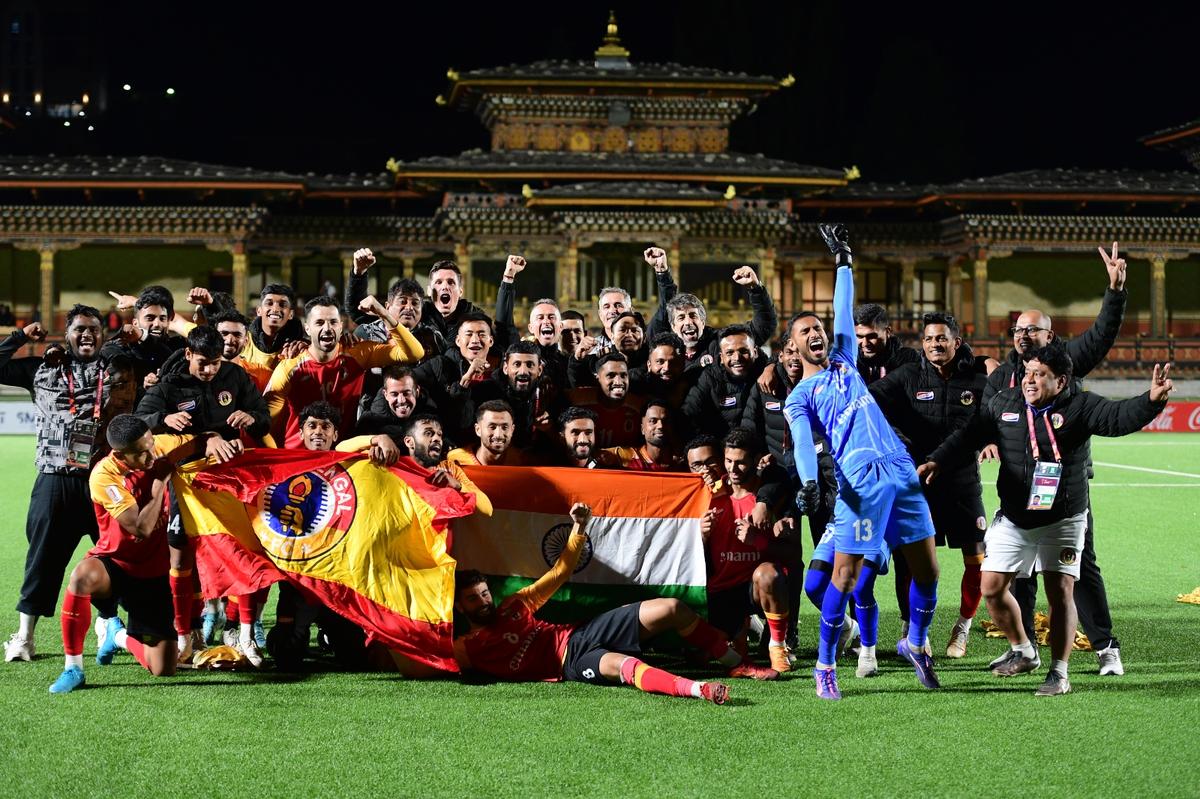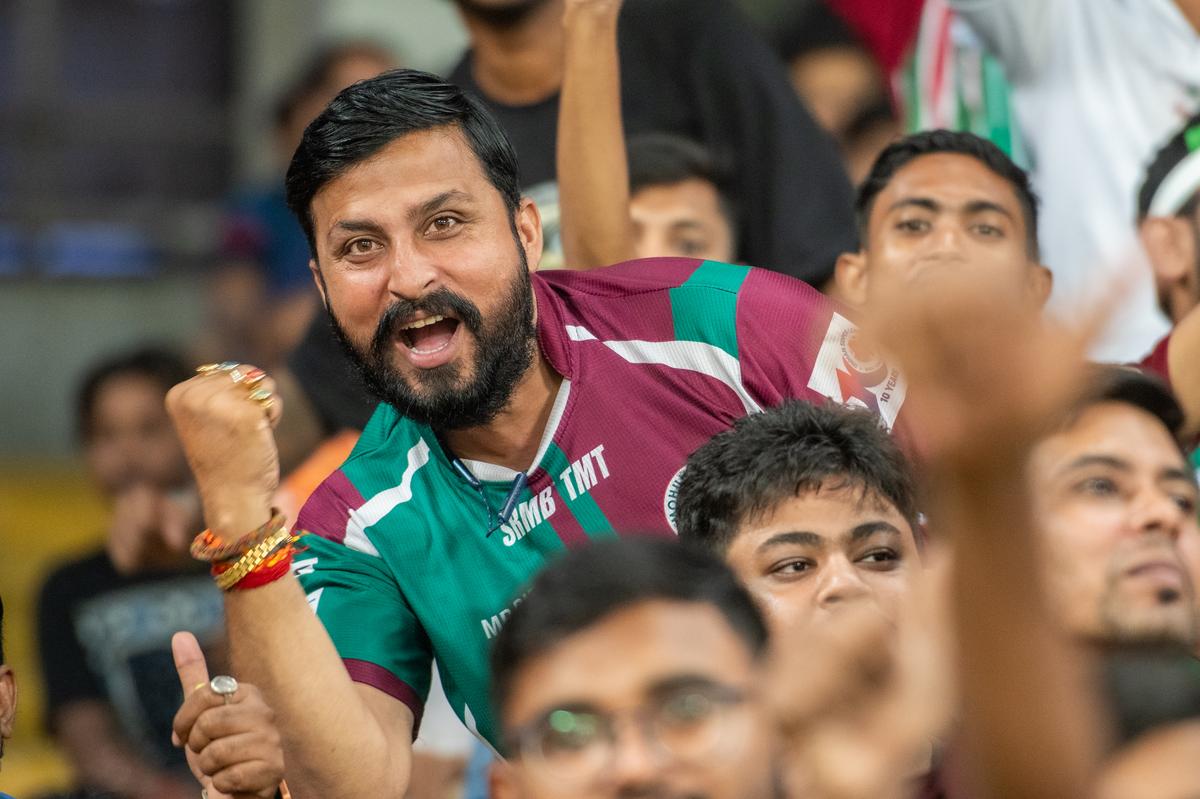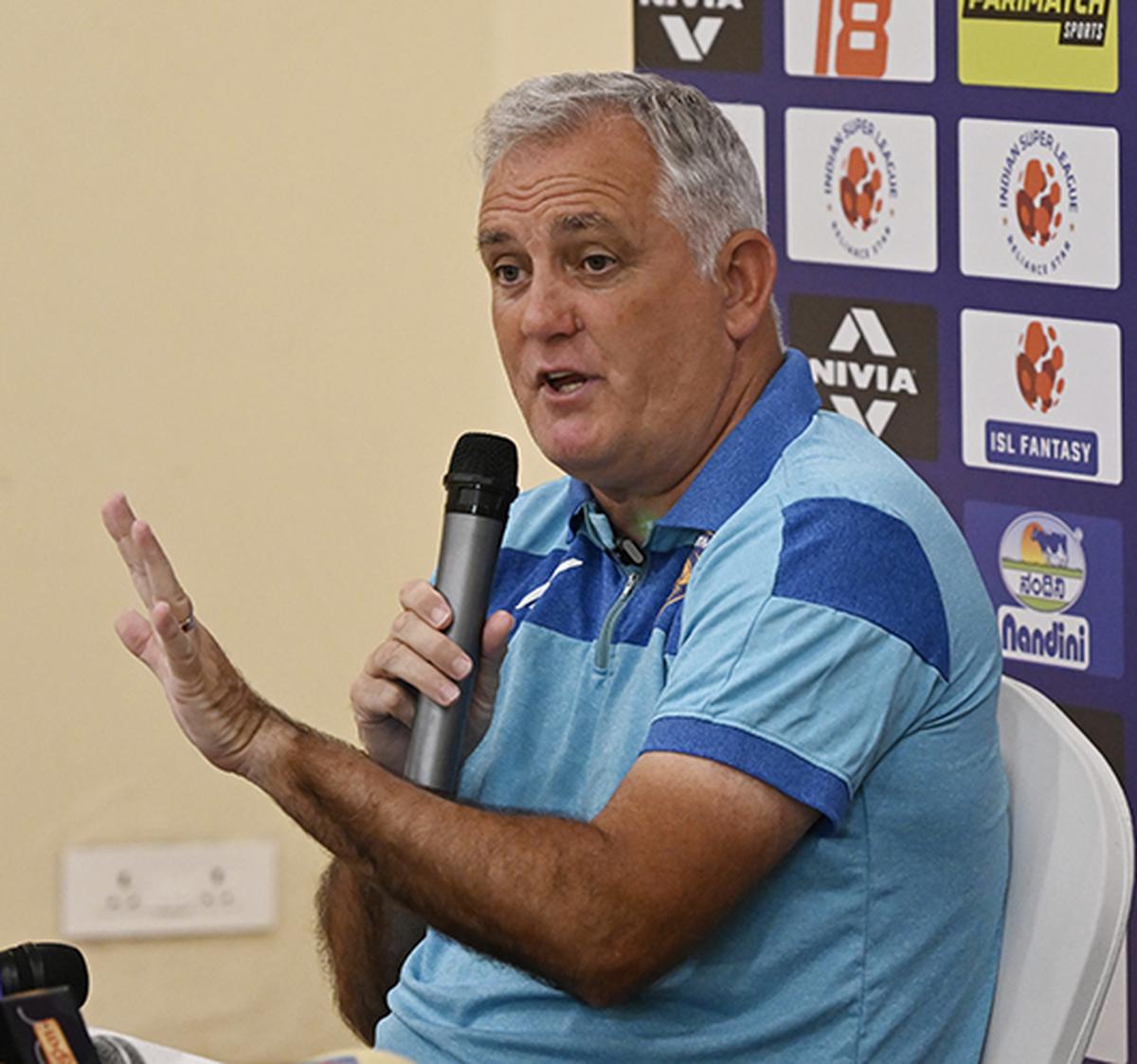A tale of contrasts between East Bengal, Mohun Bagan and the tightrope of football journalism in India

The fans of Mohun Bagan Super Giant and East Bengal FC have different reasons to celebrate their teams’ successes this time. For two of the greatest rivals in Indian football, international assignments have unfolded in contrasting ways.
While East Bengal showed great form in reaching the quarterfinals of the AFC (Asian Football Confederation) Challenge League, Mohun Bagan narrowly avoided heavy sanctions for refusing to play its AFC Champions League Two (ACL 2) match against Tractor FC of Iran.
As it stands, East Bengal will be looking to refurbish its image in the international arena, while Mohun Bagan will have to focus on its domestic fixtures, as the team has been excluded from ACL 2 for the ongoing season.
Mohun Bagan, the reigning Indian Super League champion, appeared to place the ACL 2 low on its list of priorities as it focused on team formation specifically aimed at the ISL requirements at the start of the season.
Clear intentions: Having previously played a lacklustre goalless draw at home against arguably the weakest team in the group, Ravshan Kulob of Tajikistan, Mohun Bagan’s intentions became apparent before the deteriorating geopolitical scenario in West Asia allowed it to abandon ship.
| Photo Credit:
Special Arrangement
Clear intentions: Having previously played a lacklustre goalless draw at home against arguably the weakest team in the group, Ravshan Kulob of Tajikistan, Mohun Bagan’s intentions became apparent before the deteriorating geopolitical scenario in West Asia allowed it to abandon ship.
| Photo Credit:
Special Arrangement
India’s top league still allows four foreigners on the field, with six permitted in the squad. However, with the AFC removing the cap on registering foreign players, teams participating in the ACL must make particular arrangements during the transfer season.
Mohun Bagan seemed to be caught in a bind about its international plans and appeared to prioritise its resources on defending its ISL title rather than committing funds to acquire expensive foreign players.
The club makes one of the largest investments among ISL teams in preparing its squad for the season, yet when it comes to continental competitions, it seems vastly inadequate compared to teams from West Asia, which are far ahead in spending.
The dependence on foreigners is greater for Indian clubs, as domestic players have yet to reach the standards required to compete with teams from that region.
Many suggest that the unrest in Iran, exacerbated by its conflict with Israel, worked in Mohun Bagan’s favour, allowing it to avoid a likely defeat at the hands of the vastly superior Tractor FC. Citing the volatile situation in Iran, it submitted a letter to the AFC, signed by its players who felt unsafe travelling to Tabriz, East Azerbaijan, the home of Tractor.
Having previously played a lacklustre goalless draw at home against arguably the weakest team in the group, Ravshan Kulob of Tajikistan, Mohun Bagan’s intentions became apparent before the deteriorating geopolitical scenario in West Asia allowed it to abandon ship.
In its decision, the AFC competition committee accepted Mohun Bagan’s appeal as an “event of force majeure” and refrained from penalising the team. However, the AFC committee removed the team from the competition, citing ACL 2 regulations.
While Mohun Bagan opted out, the AFC Challenge League (a tier-three tournament below ACL 2) offered East Bengal a chance to redeem itself.

Silver lining: East Bengal earning a spot in the quarterfinals of the AFC Challenge League would have mitigated some of the disappointment of a poor start to the domestic season.
| Photo Credit:
East Bengal Media
Silver lining: East Bengal earning a spot in the quarterfinals of the AFC Challenge League would have mitigated some of the disappointment of a poor start to the domestic season.
| Photo Credit:
East Bengal Media
Despite losing all six of its ISL matches, East Bengal notched up two wins and a draw to emerge as the Group A league champion in the AFC Challenge League, thus earning a spot in the quarterfinals.
This definitely helped East Bengal mitigate some of the disappointment of a poor start to the domestic season, which ultimately led to the early departure of its coach Carles Cuadrat, under whose guidance the team won the Super Cup to secure its place in the AFC tournament.
With the appointment of another Spaniard, Oscar Bruzon (right), to guide the team through the remainder of the season, East Bengal is hoping to turn things around by building on its recent performance in the AFC Challenge League.
Amitabha Das Sharma
Of chingri, dhak and goals
In the city’s football circuit, the beautiful game welcomed Pujo in its own way. Despite heavy rain before the match and the sky frowning with grey clouds, thousands turned up for the game. “I have been supporting the club since I was about nine. I watched the first match of Mohammedan Sporting at Yuva Bharati Krirangan, and my father was a club official.
“We won that match 5-0, and from that day, we have been die-hard Mohammedan fans,” Shahadat Siddique said, holding the match tickets in his hand, waiting to get into the stadium.
Minutes before kick-off, the clouds parted as fans with flags and tifos marched from either end to the Salt Lake Stadium. Flares in Mohun Bagan colours filled the air with suspense, and the response echoed through a giant tifo on the southern stand: ‘All my sons will be like me.’

Joy Mohun Bagan: Mariners’ Fans celebrate the team’s victory against Mohammedan Sporting in the Indian Super League.
| Photo Credit:
FSDL/ISL Media
Joy Mohun Bagan: Mariners’ Fans celebrate the team’s victory against Mohammedan Sporting in the Indian Super League.
| Photo Credit:
FSDL/ISL Media
When the match began, every kick became a heartbeat, every miss a heartbreak. By the end of 90 minutes, it was the chingri (prawns, one of the many symbols of Mohun Bagan) that had the last laugh over the Kolkata biryani.
Mohun Bagan scored three goals in 36 minutes and comfortably held onto that lead until the end, giving its fans enough reason to return home with roars of ‘Joy Mohun Bagan!’ from matadors, open cars, and packed buses bustling through the concrete jungle.
The win almost marked the beginning of Durga Puja in the city, and it was Mohun Bagan that earned the rights for the drumroll, with the dhak, goals, and more.
Neeladri Bhattacharjee
Whose side are you on?
The landscape of sports journalism looks vastly different to when I started out. (Just kidding. I’m only seven years into the profession but wanted to use the phrase ‘the landscape of sports journalism’ in a sentence only because it sounds serious. And, I promise, I’m about to get to something important.)
Football reporting in India may not be the most glamorous job compared to cricket reporting.
Especially in Chennai, where the football culture is not as vibrant as in Kolkata or Kerala. Before the coronavirus pandemic in 2020, there were only two reporters, including yours truly, in the press box covering the country’s top division team, Chennaiyin FC. Bleak.
Post-pandemic, there’s been a proliferation of new faces in the press box. For the last home game against FC Goa, in an encouraging show, nearly the entire row (still not a lot) seemed full.
Best seat in the stadium: Chennaiyin in action in a home game against FC Goa in the Indian Super League, at the Jawaharlal Nehru Stadium.
| Photo Credit:
FSDL/ISL Media
Best seat in the stadium: Chennaiyin in action in a home game against FC Goa in the Indian Super League, at the Jawaharlal Nehru Stadium.
| Photo Credit:
FSDL/ISL Media
Interestingly, my new, young colleagues are often also fans of the team. They cheer every pass and tackle, groan at poor passes, and leap off their seats to fist-pump for goals. Funnily enough, I found myself sandwiched between these hardened Chennaiyin-supporting reporters and an older reporter, who was on a personal call through the first half.
The conversation sounded eerily familiar. It seemed to centre around the topic of marriage. “You’re right, if you’re not married before 30, it’s hard to find someone after that.” Wait, was it my mum on the other end? Anyways, not now, please.
Chennaiyin was ceding control, and I needed to pay closer attention to whom Owen Coyle was berating from the sidelines.
In the post-match press conference, the bias was no longer subtle. One of the questions posed to Coyle started with: “First of all, I want to thank you for extending your stay with Chennaiyin FC, and I hope you will see more silverware in the coming years.”
This is not an isolated event. In earlier press conferences, “we” and “us” became common when addressing the Chennaiyin gaffer. I am a football fan-turned-reporter too, but I have inherently taught myself to hide my bias while on duty. Only if you observe closely would you note which team’s fortunes make my backside twitch or my feet shake nervously.

To be or not to be a fan: In earlier press conferences, “we” and “us” became common for some journalists when addressing the Chennaiyin gaffer.
| Photo Credit:
Ragu R / The Hindu
To be or not to be a fan: In earlier press conferences, “we” and “us” became common for some journalists when addressing the Chennaiyin gaffer.
| Photo Credit:
Ragu R / The Hindu
Back at the press conference, after Manolo Marquez completed his media duties, several journalists went up to take pictures with him, and the Spaniard happily obliged. A senior journalist next to me quipped, “If *** *** had seen this, he would yell, ‘Bloody, we are journalists, man, not cheerleaders!’”
It’s imperative to leave one’s biases and fondness for favourites at the gates before entering the press box. But it’s becoming increasingly hard to miss the partisanship that comes through one way or another.
TV media pundits, too, often refer to their national team or favourite clubs as “we” or “us”. Media outlets in England and Spain, two of the biggest footballing nations, have journalists who proudly wear their club’s badges.
While it’s up to readers to decide if it bothers them, I, for one, am happy to see more new faces in the press box. It doesn’t feel lonely anymore. (Unless, of course, my colleagues come across this piece and take umbrage at my observations for some reason.)
Aashin Prasad


